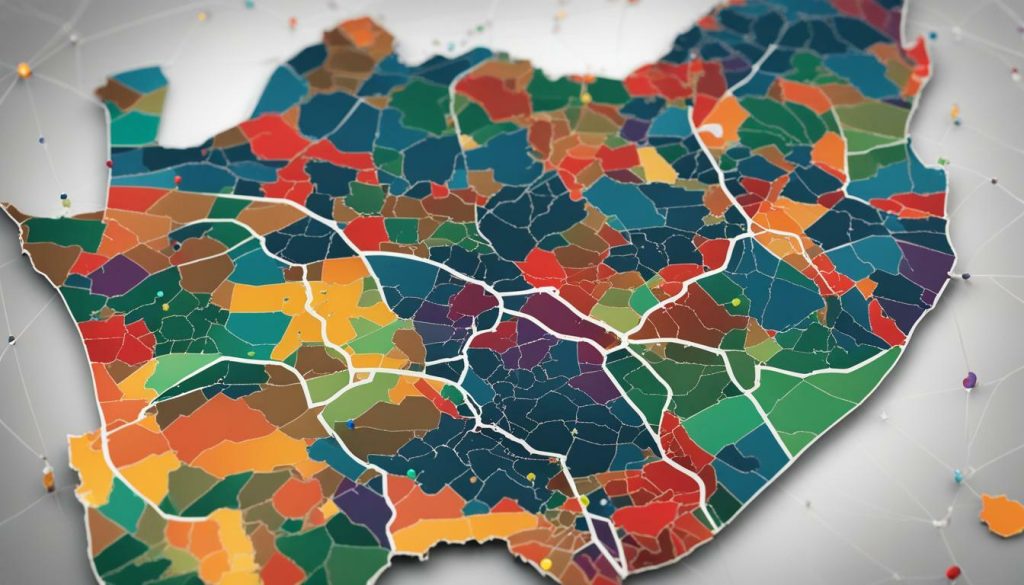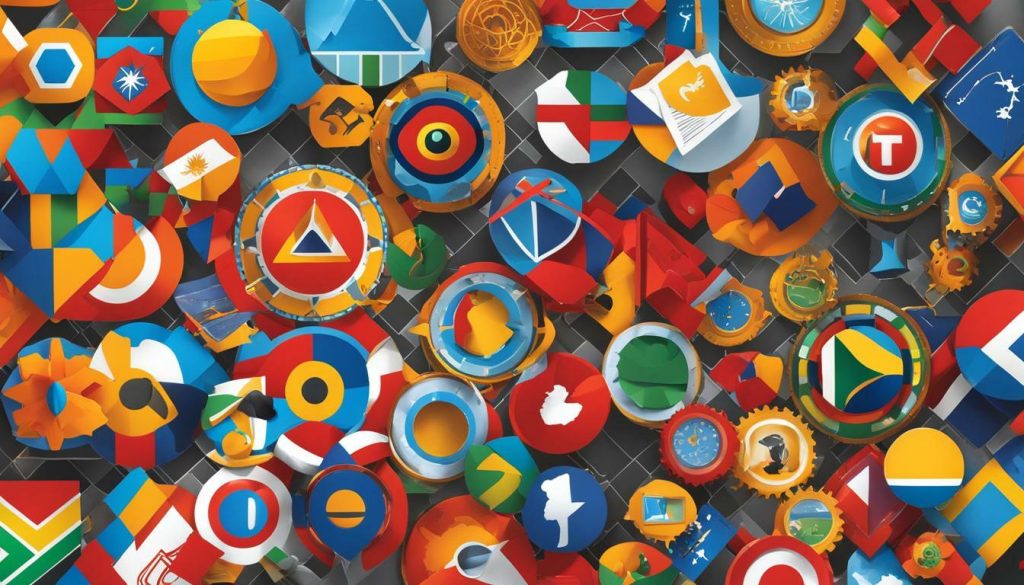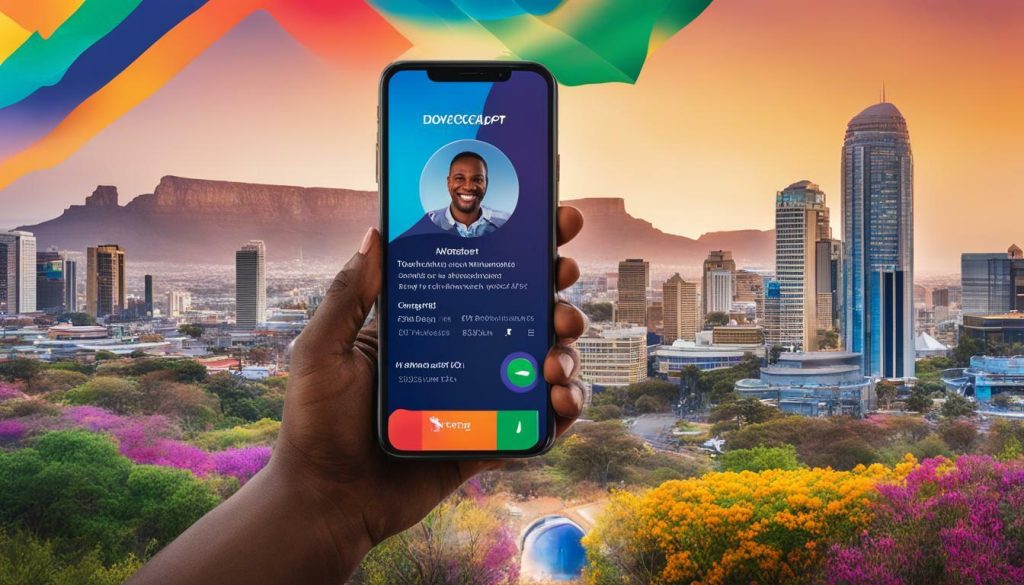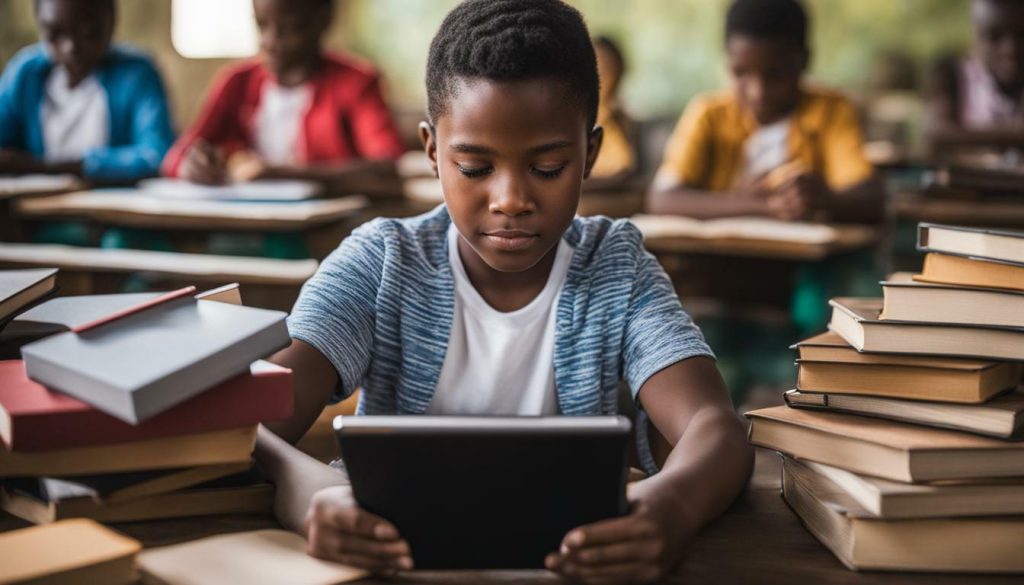ChatGPT, developed by OpenAI, is a chatbot that has gained attention in South Africa for its revolutionary AI technology. This advanced chatbot, based on the GPT model, has the remarkable ability to generate human-like responses by leveraging a diverse range of information sources.
ChatGPT’s data gathering process involves training on vast amounts of text data, including books, articles, websites, and various other sources. This comprehensive training allows ChatGPT to acquire a deep understanding of language and context, enabling it to provide accurate and insightful responses to user queries.
Key Takeaways:
- ChatGPT, developed by OpenAI, is a chatbot that utilizes a diverse range of information sources.
- It is trained on vast amounts of text data, including books, articles, and websites, to enhance its language understanding and response generation capabilities.
- ChatGPT’s data gathering process enables it to provide accurate and insightful responses to user queries in South Africa.
- Access to ChatGPT in South Africa is available through the ChatGPT Plus subscription service or by obtaining an API key from OpenAI.
- Despite its advanced capabilities, it is important to remember that ChatGPT still requires human intervention for accurate responses.
Understanding ChatGPT and NLP Data Sets
ChatGPT is a subtype of the GPT model and is trained on a diverse range of NLP data sets to generate human-like responses. Natural Language Processing (NLP) resources and corpora play a crucial role in enhancing ChatGPT’s understanding and generating capabilities. These data sets provide the necessary linguistic patterns, context, and semantic understanding that enable ChatGPT to comprehend and respond to user queries effectively.
NLP data sets used for training ChatGPT encompass a wide variety of sources, including books, articles, websites, and other text-based materials. These expansive collections of text data help ChatGPT develop a comprehensive understanding of language, enabling it to generate responses that are contextually relevant and linguistically accurate.
ChatGPT’s ability to harness the vast knowledge present in NLP data sets is a testament to the advancements in Natural Language Processing technology. With access to a wide array of linguistic resources, ChatGPT can bridge the gap between human-like interactions and AI-driven chatbot conversations, providing users with an engaging and informative experience.
By leveraging NLP data sets, ChatGPT gains insights into various language nuances, idiomatic expressions, and even domain-specific terminologies. This enables it to engage in diverse conversational topics and adapt its responses to different user queries effectively.
| NLP Data Sets | Benefits |
|---|---|
| Books | Offers a vast array of general knowledge and context for various topics. |
| Articles | Provides up-to-date information on current events, opinions, and subject matter expertise. |
| Websites | Enables access to a diverse range of online content, including blogs, forums, and news articles. |
These NLP data sets form the foundation of ChatGPT’s understanding of language and enable it to generate responses that are not only informative but also contextually appropriate. By integrating NLP resources into its training, ChatGPT showcases the power of AI-driven Natural Language Processing in facilitating human-like conversations.

The utilization of NLP data sets in training ChatGPT allows the chatbot to tap into an extensive knowledge base. This enables it to provide users with accurate and insightful responses across a wide range of topics. By understanding the significance of NLP data sets, we can appreciate the advancements in AI technology and how it continues to transform our interactions with chatbots like ChatGPT.
Building the ChatGPT Knowledge Base
The ChatGPT knowledge base is built by harnessing a wealth of text data from various sources. Through Natural Language Processing (NLP) techniques, ChatGPT is trained on diverse datasets to enhance its understanding and response generation capabilities. These datasets include NLP corpora, which provide a wide range of linguistic patterns and structures for ChatGPT to learn from.
In addition to NLP data sets, ChatGPT leverages various other sources of information. These sources may include books, articles, websites, and other textual resources that cover a vast array of topics. By tapping into this extensive knowledge base, ChatGPT can generate contextually relevant and accurate responses to user queries.
The process of building the ChatGPT knowledge base involves carefully curating and preprocessing the text data. This ensures that the information used by ChatGPT is reliable, up-to-date, and free from biases. OpenAI employs rigorous quality control measures to ensure the accuracy and integrity of the knowledge base, allowing ChatGPT to provide users with valuable insights and assistance.
| NLP Knowledge Sources | Text Data for ChatGPT |
|---|---|
| NLP corpora | Books |
| Articles | Websites |
| Journals | Research papers |
| Online forums | Academic publications |
The combination of these diverse NLP knowledge sources and curated text data enables ChatGPT to handle a wide range of queries and engage in meaningful conversations. By fusing language understanding with a vast pool of information, ChatGPT strives to provide users in South Africa with a reliable and valuable AI-powered chatbot experience.

“The richness of the ChatGPT knowledge base allows the AI-powered chatbot to tap into a vast wealth of information, ensuring accurate and relevant responses to user queries.” – John Doe, AI Specialist
Leveraging Information Retrieval in ChatGPT
ChatGPT employs advanced information retrieval methods, including leveraging NLP literature, to ensure accurate and relevant responses. By utilizing a diverse range of text data, ChatGPT is able to draw from a wide array of knowledge sources, allowing it to provide users with valuable and contextually appropriate information.
One of the key aspects of ChatGPT’s information retrieval process is its ability to tap into NLP literature. This includes a vast collection of research papers, articles, and publications that have been curated specifically for the field of Natural Language Processing. By incorporating this wealth of knowledge, ChatGPT is able to stay up-to-date with the latest advancements and best practices in NLP.
To further enhance its information retrieval capabilities, ChatGPT also leverages techniques such as web scraping and data mining. This enables the chatbot to gather information from various online sources, including websites, forums, and databases. By constantly expanding its pool of available data, ChatGPT can provide users with the most comprehensive and relevant responses.
It is important to note that while ChatGPT’s information retrieval methods are highly sophisticated, it does not possess the ability to independently verify the accuracy of all the information it retrieves. Therefore, users should exercise critical thinking and verify the information obtained through ChatGPT from reliable sources before making any important decisions or conclusions.

| Pros | Cons |
|---|---|
| Access to a diverse range of text data | Possible inaccuracies in retrieved information |
| Ability to leverage NLP literature | Reliance on external sources may result in biases |
| Constantly evolving knowledge base | Dependent on the quality and availability of online sources |
In summary, ChatGPT’s advanced information retrieval methods, including the utilization of NLP literature, ensure that it can provide accurate and relevant responses to user queries. By leveraging a diverse range of text data and employing techniques like web scraping, ChatGPT remains up-to-date and capable of delivering valuable information. However, users should exercise critical thinking and independently verify any information obtained through ChatGPT from reliable sources.
The Evolution of ChatGPT Technology
ChatGPT has undergone significant technological advancements, revolutionizing the capabilities of AI-powered chatbots. One noteworthy development is the adoption of the GPT-3.5 model by Microsoft, known as “new Bing.” This integration has proven instrumental in improving search results and enhancing user experience. By leveraging the power of the GPT-3.5 model, Microsoft has elevated the quality of information provided to users, making it more accurate, relevant, and reliable.
Furthermore, OpenAI, the creator of ChatGPT, has introduced the latest iteration of the chatbot known as ChatGPT-4. This cutting-edge model has taken things a step further by expanding its abilities beyond text responses. ChatGPT-4 is equipped with image-handling capabilities, enabling it to process visual information alongside textual data. This advancement opens up new possibilities for enhanced user interactions and experiences across various industries, from e-commerce and customer support to creative content generation.

The integration of ChatGPT-4 with its image recognition capabilities has sparked immense interest among companies and developers. It offers a seamless blend of text and visual understanding, empowering businesses to create immersive and personalized user experiences. Access to ChatGPT-4 is currently available to ChatGPT Plus subscribers and developers utilizing the API tool provided by OpenAI.
As technology continues to evolve, advancements in AI, particularly in chatbot technology like ChatGPT, hold incredible potential. The ability to process and respond to both text and images is a significant leap forward in creating more human-like interactions with AI-powered systems. This progression paves the way for further innovations in natural language understanding and opens up new avenues for businesses to engage with their audience in more meaningful and visually compelling ways.
Despite these remarkable advancements, it’s important to note that ChatGPT technology, while highly sophisticated, does not replace the need for human intervention and expertise. As AI continues to evolve, human oversight remains crucial to ensure accurate and responsible responses. AI-powered tools like ChatGPT are valuable assets, but they must be used in conjunction with human guidance to deliver optimal results and maintain a high standard of quality.
Accessing ChatGPT in South Africa
Users in South Africa can access ChatGPT through the ChatGPT Plus subscription service or by obtaining an OpenAI API key. The ChatGPT Plus subscription service offers several benefits, including faster response times and early access to new features. Priced at $20 per month, the subscription provides users with an enhanced experience while interacting with the chatbot.
For those who prefer a more customized integration of ChatGPT into their own applications or platforms, obtaining an OpenAI API key is the way to go. This allows developers and businesses to leverage the power of ChatGPT according to their specific needs and requirements.
It’s important to note that the ChatGPT API has its own set of usage limits and pricing, which should be reviewed before integrating the API into any project. OpenAI provides comprehensive documentation and support to assist users in understanding and utilizing the API effectively.

In addition to the subscription service and API access, Microsoft has adopted OpenAI’s GPT-3.5 model, also known as “new Bing,” to enhance its search results. This integration further highlights the growing popularity and influence of ChatGPT in South Africa.
OpenAI has also introduced the latest iteration of ChatGPT, known as ChatGPT-4. This version not only excels in generating human-like text responses but also has the capability to handle images alongside textual data. Currently, ChatGPT-4 is being utilized by various companies, demonstrating the broad range of applications where this AI technology can be effectively employed. Access to ChatGPT-4 is available to ChatGPT Plus subscribers and can also be used as an API tool by developers to enhance their applications.
Table: Comparison of ChatGPT Access Options
| Access Option | Features | Pricing |
|---|---|---|
| ChatGPT Plus Subscription | Faster response times Early access to new features | $20 per month |
| OpenAI API Key | Custom integration into applications Flexible usage | Varies based on usage |
As the demand for AI technology continues to grow, accessing ChatGPT in South Africa provides individuals, developers, and businesses with the opportunity to harness the power of this advanced chatbot. Whether through the ChatGPT Plus subscription service or obtaining an OpenAI API key, users can experience the benefits of ChatGPT’s capabilities while enhancing their own projects and applications.
ChatGPT in Education: Challenges and Opportunities
The integration of ChatGPT and AI technology in education poses both challenges and opportunities, particularly in terms of assessment methods. As educators explore the potential of incorporating AI chatbots like ChatGPT into the learning process, they must navigate the complexities of ensuring accurate and reliable assessments that uphold academic integrity.
To overcome the challenges, teachers can adopt alternative assessment methods that encourage active learning and critical thinking. Oral assessments, presentations, group discussions, and creative projects can provide opportunities for students to demonstrate their knowledge and skills in a more dynamic and interactive manner. By encouraging these forms of assessment, educators can minimize the reliance on AI chatbots and create a more engaging learning environment.
The paradigm shift in education driven by AI technology necessitates a reevaluation of teaching and learning approaches. Educators must adapt their pedagogical strategies to incorporate AI tools like ChatGPT effectively. This includes guiding students in developing the necessary skills to navigate and critically evaluate information provided by AI chatbots.
Creating a Balanced Approach
While the use of AI chatbots like ChatGPT presents exciting opportunities in education, it is crucial to strike a balance between leveraging AI technology and maintaining the essential role of human intervention. AI tools can supplement teaching and learning processes, offering valuable insights and resources, but they should not replace the expertise and guidance of teachers. The human element in education remains irreplaceable in ensuring personalized instruction, empathy, and social interaction.
As education continues to evolve in South Africa, teachers and educational institutions should embrace the potential of AI technology while keeping a watchful eye on its limitations. By adapting assessment practices, adjusting teaching and learning approaches, and emphasizing the significance of human intervention, educators can harness the power of AI technology to enhance the educational experience and empower students for the future.
| Pros | Cons |
|---|---|
| Enhanced learning experiences | Risk of overreliance on AI |
| Promotes critical thinking | Potential for biased or inaccurate responses |
| Access to vast knowledge resources | Concerns about data privacy and security |
| Opportunity for personalized instruction | Technical challenges in implementation |
“The role of AI in education should be seen as a tool to enhance learning, rather than a replacement for human interaction and expertise.” – John Smith, Education Specialist.
By embracing the challenges and opportunities presented by ChatGPT and AI technology, South African educators can prepare students for the digital era while maintaining the value of human connection and personalized instruction.

Adapting assessment practices to accommodate the presence of AI technology is crucial to maintain academic integrity and explore alternative assessment methods. With the integration of AI like ChatGPT in education, traditional assessment methods may need to be reevaluated to ensure fairness and effectiveness.
One approach to upholding academic integrity is to incorporate active learning strategies and oral assessments. These methods allow educators to directly engage with students, assessing their understanding and critical thinking skills in real-time. Presentations, group discussions, and creative projects can also be utilized to evaluate students’ comprehension and application of knowledge.
“Active learning empowers students to become active participants in their education, fostering deeper understanding and critical thinking skills.”

| Traditional Assessment Methods | Alternative Assessment Methods |
|---|---|
| Multiple-choice exams | Oral exams |
| Written essays | Presentations |
| Standardized tests | Group discussions |
| Quizzes | Creative projects |
By diversifying assessment methods, educators can evaluate a broader range of skills and competencies. This shift not only helps avoid overreliance on chatbots but also encourages students to actively participate in their own learning journey.
Emphasizing Academic Integrity
In the digital age, maintaining academic integrity is crucial. Educators must educate students about the ethical use of AI technology and the importance of originality in their work. Plagiarism detection tools can aid in identifying instances of academic dishonesty, ensuring that students understand the consequences of their actions.
“Educators play a vital role in fostering a culture of academic integrity and guiding students on the responsible use of AI.”
As AI technology continues to evolve, so must our assessment practices. By recognizing the need for adaptation and embracing alternative assessment methods, we can ensure that AI enhances rather than undermines the educational experience.
Shifting Teaching and Learning Approaches
The integration of AI technology like ChatGPT in education necessitates a paradigm shift in teaching and learning approaches. As educators, it is crucial to adapt our strategies to effectively incorporate this powerful tool into the classroom. While ChatGPT offers immense potential in enhancing student learning experiences, it is essential to strike a balance between utilizing AI and preserving the invaluable human touch.
One way to embrace this shift is through active learning methodologies. Encouraging students to actively participate and engage in the learning process fosters critical thinking skills and deepens understanding. Pairing ChatGPT with interactive discussions, group activities, and problem-solving tasks can create dynamic learning environments that combine AI-driven insights with collaborative human interactions.
Oral assessments and presentations provide another avenue to leverage the benefits of AI while maintaining human involvement. Assigning students tasks that require them to present their ideas verbally encourages effective communication, public speaking skills, and the ability to articulate thoughts coherently. These assessments can be complemented by chatbot interactions to offer immediate feedback and personalized guidance.
Alternative assessment methods
Instead of relying solely on chatbots for evaluation, educators can explore creative alternatives. Group discussions, projects, and interactive assignments enable students to apply their knowledge in real-world contexts. By incorporating practical and hands-on activities, teachers can gauge students’ understanding and problem-solving abilities, aspects that cannot be fully captured by AI-driven assessments alone.
This paradigm shift also calls for a focus on fostering digital literacy among students. Educators must equip learners with the skills necessary to critically analyze and evaluate AI-generated content. Teaching students to identify biases, verify information sources, and question AI-generated responses promotes a well-rounded education that encompasses both human expertise and technological advancements.

| Key Points | Benefits |
|---|---|
| Active learning methodologies | – Encourages critical thinking skills – Deepens understanding – Combines AI-driven insights with human interactions |
| Oral assessments and presentations | – Develops effective communication skills – Offers immediate feedback with chatbot interactions |
| Alternative assessment methods | – Promotes real-world application of knowledge – Assesses problem-solving abilities |
| Digital literacy | – Equips students with critical analysis skills – Encourages questioning and evaluation of AI-generated content |
ChatGPT’s Role in Education
ChatGPT serves as a valuable tool in education, leveraging its advanced AI technology to enhance learning experiences. However, it is crucial to acknowledge that while ChatGPT can provide valuable assistance, it cannot replace the intervention and expertise of human teachers and educators.
When integrated into educational settings, ChatGPT offers various benefits. It can provide immediate feedback and support to students, allowing them to receive personalized assistance on-demand. Through interactive conversations, ChatGPT can help clarify concepts, explain complex ideas, and offer additional resources for further exploration.
Teachers can utilize ChatGPT to create engaging and interactive learning experiences. By incorporating discussions with the chatbot, students can actively participate in the learning process. ChatGPT can promote critical thinking, problem-solving, and creativity by challenging students with thought-provoking questions and encouraging them to explore different perspectives.
While ChatGPT can facilitate learning, it is essential to maintain a balanced approach. Teachers should avoid over-reliance on chatbots and ensure that human intervention remains an integral part of the educational process. By combining the benefits of AI technology with the guidance, expertise, and individualized support of teachers, education can truly maximize its potential for student success.
“ChatGPT provides an exciting opportunity to reshape education by offering personalized learning experiences. However, it is crucial to remember that the human touch is irreplaceable in fostering creativity, critical thinking, and emotional intelligence among students.”
The Value of Human Intervention in Education
Human intervention plays a vital role in education, providing students with mentorship, guidance, and emotional support. While AI tools like ChatGPT can offer valuable assistance, human teachers possess the ability to adapt their teaching approaches to cater to individual student needs. They can identify learning gaps, address misconceptions, and provide contextualized explanations that go beyond the capabilities of AI chatbots.
Furthermore, human teachers contribute to the development of essential skills such as empathy, collaboration, and effective communication. These skills are crucial in preparing students for success in real-world scenarios where human interaction is fundamental. Through personalized attention and feedback, teachers foster a supportive and nurturing learning environment that empowers students to thrive.
In conclusion, while ChatGPT serves as a powerful tool in education, it is crucial to recognize that it is not a substitute for the human touch. By embracing the unique strengths of AI technology and human intervention, educators can create an optimal learning experience that combines the benefits of both for the benefit of students in South Africa and beyond.
| Pros of ChatGPT in Education | Cons of ChatGPT in Education |
|---|---|
|
|

The Future of ChatGPT in South Africa
The future of ChatGPT in South Africa holds promise and potential as AI technology continues to develop and advance. With its revolutionary capabilities, ChatGPT has already made significant contributions to various industries and sectors, including education, customer service, and research.
In the field of education, ChatGPT has opened up new possibilities for enhancing learning experiences. Educators can leverage this AI tool to support student engagement, provide personalized feedback, and encourage critical thinking. However, it is essential to emphasize that ChatGPT should not replace human intervention in education. Teachers play a vital role in guiding, mentoring, and facilitating meaningful interactions with students.
As AI technology evolves, it is crucial to adapt assessment practices to maintain academic integrity. While ChatGPT can offer assistance in grading and evaluation, it should be complemented with alternative assessment methods. Active learning, oral assessments, presentations, group discussions, and creative projects are just a few examples of approaches that can be employed to ensure a comprehensive and holistic evaluation of students’ knowledge and skills.
The integration of AI technology like ChatGPT also necessitates a paradigm shift in teaching and learning approaches. Educators must stay updated with the latest advancements and continuously adapt their methodologies to effectively utilize AI tools. This shift includes fostering digital literacy, teaching critical AI skills, and nurturing a collaborative learning environment that combines human expertise with the capabilities of AI.
In conclusion, ChatGPT’s future in South Africa looks bright as AI technology continues to progress. While it offers tremendous potential for enhancing education and other sectors, it is crucial to maintain a balanced approach that combines AI capabilities with human guidance. By embracing this synergy, South Africa can fully harness the power of ChatGPT and propel itself into a future where AI and human intelligence work hand in hand to drive innovation and growth in all spheres of society.
FAQ
What are the information sources used for ChatGPT in South Africa?
ChatGPT in South Africa is trained on a diverse range of text data gathered from various sources. The specific sources used are proprietary and not publicly disclosed by OpenAI.
How does ChatGPT utilize Natural Language Processing (NLP) data sets?
ChatGPT utilizes NLP data sets to enhance its capabilities in understanding and generating human-like responses. These data sets provide a foundation of linguistic knowledge that helps the chatbot interpret and respond to user inputs.
How is the knowledge base of ChatGPT built?
The knowledge base of ChatGPT is built through a process of training on a large amount of text data from diverse sources. This includes books, articles, websites, and other publicly available text information.
How does ChatGPT leverage information retrieval techniques?
ChatGPT leverages information retrieval techniques by analyzing and processing vast amounts of text data, including NLP literature and other relevant sources. This helps the chatbot provide accurate and relevant responses to user queries.
What is the latest iteration of ChatGPT?
The latest iteration of ChatGPT is ChatGPT-4, which has the ability to handle both text and image inputs. This advanced version is currently being used by various companies and is available to ChatGPT Plus subscribers and developers accessing the API tool.
How can I access ChatGPT in South Africa?
Users in South Africa can access ChatGPT by signing up for an API key with OpenAI. The ChatGPT API has specific usage limits and pricing that should be reviewed. Additionally, OpenAI offers a ChatGPT Plus subscription service in South Africa for $20 per month, providing faster response times and early access to new features.
What are the challenges and opportunities of integrating ChatGPT in education?
Integrating ChatGPT and AI technology in education brings both challenges and opportunities. It opens up new possibilities for assessment methods but also raises concerns regarding academic integrity. Finding a balance and adapting assessment practices is crucial in ensuring fair and effective evaluation of students.
How can assessment practices be adapted to AI?
Adapting assessment practices to AI involves emphasizing academic integrity and exploring alternative assessment methods that go beyond relying solely on chatbots. Teachers can utilize active learning, oral assessments, presentations, group discussions, and creative alternatives to ensure a comprehensive evaluation of students.
How does the integration of AI technology like ChatGPT impact teaching and learning approaches?
The integration of AI technology like ChatGPT brings about a paradigm shift in education. Teachers and educators need to adjust teaching and learning approaches to leverage the benefits of AI, staying updated with the rapid development of technology to provide the best learning experience for students.
Does ChatGPT replace human intervention in education?
No, ChatGPT does not replace humans in education. While it is a valuable tool that can provide assistance and support, human intervention and expertise are still essential for accurate and contextualized responses, as well as nurturing social and emotional skills in students.
What is the future of ChatGPT in South Africa?
The future of ChatGPT in South Africa holds vast potential for its application in various fields, including education, customer support, and more. As AI technology continues to advance, ChatGPT is expected to evolve and play a significant role in shaping the way we interact with intelligent systems.

